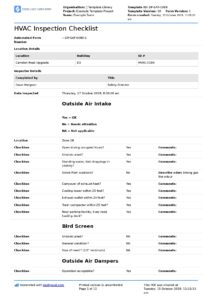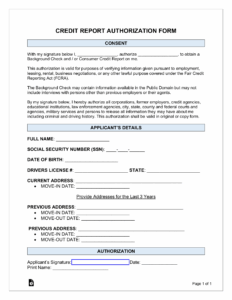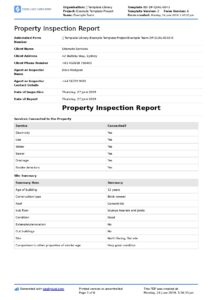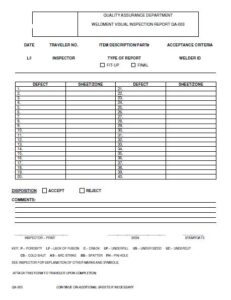Managing rental properties can be a rewarding endeavor, but it comes with its fair share of responsibilities. One crucial aspect often overlooked or rushed is the regular inspection of your properties. While it might seem like an extra chore, proactive property inspections are an invaluable tool for maintaining your investment, ensuring tenant accountability, and protecting yourself from potential disputes down the line. It’s about staying ahead of wear and tear, spotting minor issues before they escalate, and fostering a good landlord-tenant relationship built on clear expectations.
The key to effective inspections lies in consistency and thorough documentation. Simply walking through a property isn’t enough; you need a structured way to record your observations, take notes, and log any findings. This is precisely where a well-designed landlord property inspection report template becomes an indispensable asset. It provides a standardized framework, ensuring no critical area is missed and that your records are clear, comprehensive, and legally sound.
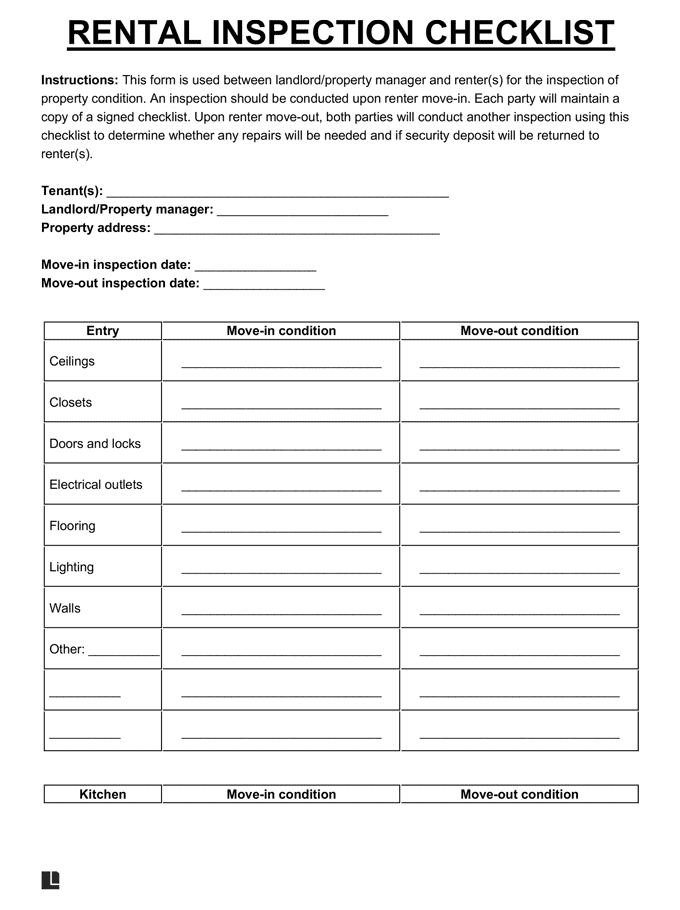
Having a robust template in place transforms a potentially subjective walkthrough into an objective and verifiable assessment. It sets a professional tone, demonstrating to your tenants that you take property maintenance seriously and expect them to do the same. From move-in to routine checks and finally to move-out, using a consistent template helps create a historical record of the property’s condition, which can be invaluable for assessing damages, handling security deposits, and even planning future maintenance.
Why Regular Property Inspections Are a Landlord’s Best Friend
Regular property inspections are far more than just a formality; they are a cornerstone of effective property management and a landlord’s proactive defense strategy. Think of them as preventative healthcare for your rental unit. By routinely checking on the property, you can catch small issues like a leaky faucet or a budding mold problem before they evolve into significant, costly repairs. This preventative approach saves you money in the long run, prevents extensive damage, and ensures the property remains in excellent condition.
Beyond just preventing physical deterioration, inspections play a vital role in tenant accountability. Knowing that periodic checks will occur encourages tenants to maintain the property according to their lease agreement. It fosters a sense of responsibility and can deter unauthorized alterations or neglect. When tenants understand that their care for the property is being regularly documented, they are more likely to uphold their end of the bargain, leading to a better-maintained home for everyone involved.
Perhaps one of the most critical benefits is the legal protection provided by thorough documentation. In the unfortunate event of a dispute over damages, a security deposit, or tenant responsibilities, your detailed inspection reports serve as undeniable evidence. Without concrete records, it can become a “he said, she said” situation, often leaving the landlord at a disadvantage. A clear, objective report, ideally signed by all parties, removes ambiguity and strengthens your position considerably. This is precisely where a comprehensive landlord property inspection report template becomes an indispensable tool, ensuring you have all your bases covered.
Moreover, inspections help you comply with health and safety standards. You can identify potential hazards, such as faulty smoke detectors, exposed wiring, or pest infestations, and address them promptly. This not only protects your tenants but also shields you from liability in case of an accident. Regular checks demonstrate your commitment to providing a safe and habitable living environment, which is a legal and ethical obligation.
Finally, inspections offer an opportunity to build a better relationship with your tenants. They are a chance to communicate, address any concerns your tenants might have, and show them that you are an engaged and responsive landlord. While the primary goal is property assessment, these interactions can foster trust and open lines of communication, leading to happier tenants and longer tenancies.
Key Elements to Include in Your Inspection Report
A truly effective inspection report goes beyond just a basic checklist. It needs to capture a comprehensive snapshot of the property’s condition at a specific point in time. While the specific layout might vary, every robust report should encompass several core components to ensure its utility and legal standing.
Here’s a breakdown of what your template should definitely include:
- Property Information: Full address, unit number, date and time of inspection, and the specific type of inspection being conducted (e.g., move-in, routine, move-out).
- Participant Details: Names and contact information of the landlord/agent and all tenants present during the inspection.
- Room-by-Room Breakdown: A methodical sectioning of the property (living room, kitchen, bedrooms, bathrooms, exterior, etc.), each with a detailed checklist of items.
- Itemized Checklist: Within each room, list specific components such as walls, ceilings, floors, windows, doors, light fixtures, outlets, appliances, cabinets, plumbing fixtures, and smoke detectors.
- Condition Ratings: A clear system to rate the condition of each item (e.g., excellent, good, fair, poor, damaged, N/A).
- Comments and Notes Section: Ample space to add specific descriptions of observations, any existing damage, or areas of concern. This is crucial for detailing “fair” or “poor” ratings.
- Photo/Video Evidence Section: A designated area to indicate that photos or videos were taken, with notes correlating them to specific observations.
- Tenant Concerns: A section for tenants to note any issues they want recorded.
- Signatures: Space for all parties (landlord/agent and tenants) to sign and date, indicating agreement with the report’s findings. This is incredibly important for legal enforceability.
Remember, the more detailed your notes and the more visual evidence you can provide (photos, videos), the stronger your report will be. A well-structured landlord property inspection report template streamlines this entire process, guiding you through each room and item, ensuring nothing is overlooked and all necessary information is captured clearly and concisely.
Streamlining Your Process with a Digital Template
In today’s fast-paced world, relying solely on paper forms for property inspections can be cumbersome and inefficient. That’s why transitioning to a digital landlord property inspection report template can revolutionize your property management workflow. Imagine no more deciphering messy handwriting, misplacing vital documents, or lugging around stacks of forms. Digital templates offer unparalleled convenience, allowing you to complete inspections directly on a tablet or smartphone, often even offline.
The benefits extend far beyond just portability. Digital reports significantly enhance data management. They often allow for direct photo integration, meaning you can snap pictures of specific issues and embed them directly into the report item, providing irrefutable visual evidence. E-signatures can be captured on-site, making the process smoother and ensuring immediate agreement from tenants. Once completed, reports can be instantly shared via email, automatically backed up to cloud storage, and easily accessed from anywhere at any time.
Furthermore, digital solutions often come with search and reporting capabilities that paper systems simply cannot match. You can quickly search past reports, track maintenance history, or generate summaries of property conditions over time. This makes tenant turnover assessments much simpler, as you have a clear, chronological record of the property’s state. Embracing a digital landlord property inspection report template isn’t just about saving paper; it’s about investing in a more organized, efficient, and robust system for managing your valuable rental properties.
Regular, well-documented property inspections are undeniably one of the most powerful tools in a landlord’s arsenal. They are the proactive measure that safeguards your investment, fosters transparent communication with your tenants, and provides an essential layer of legal protection. By consistently utilizing a comprehensive reporting system, you are not just checking off a task; you are actively building a detailed history of your property, an asset that proves invaluable in every stage of a tenancy.
Ultimately, peace of mind comes from knowing you have a clear, objective record of your property’s condition, both for your benefit and for your tenants’. Investing the time to conduct thorough inspections and maintain meticulous reports is a testament to responsible property ownership. It protects your financial interests, upholds safety standards, and cultivates a professional landlord-tenant relationship built on clear expectations and documented realities.
